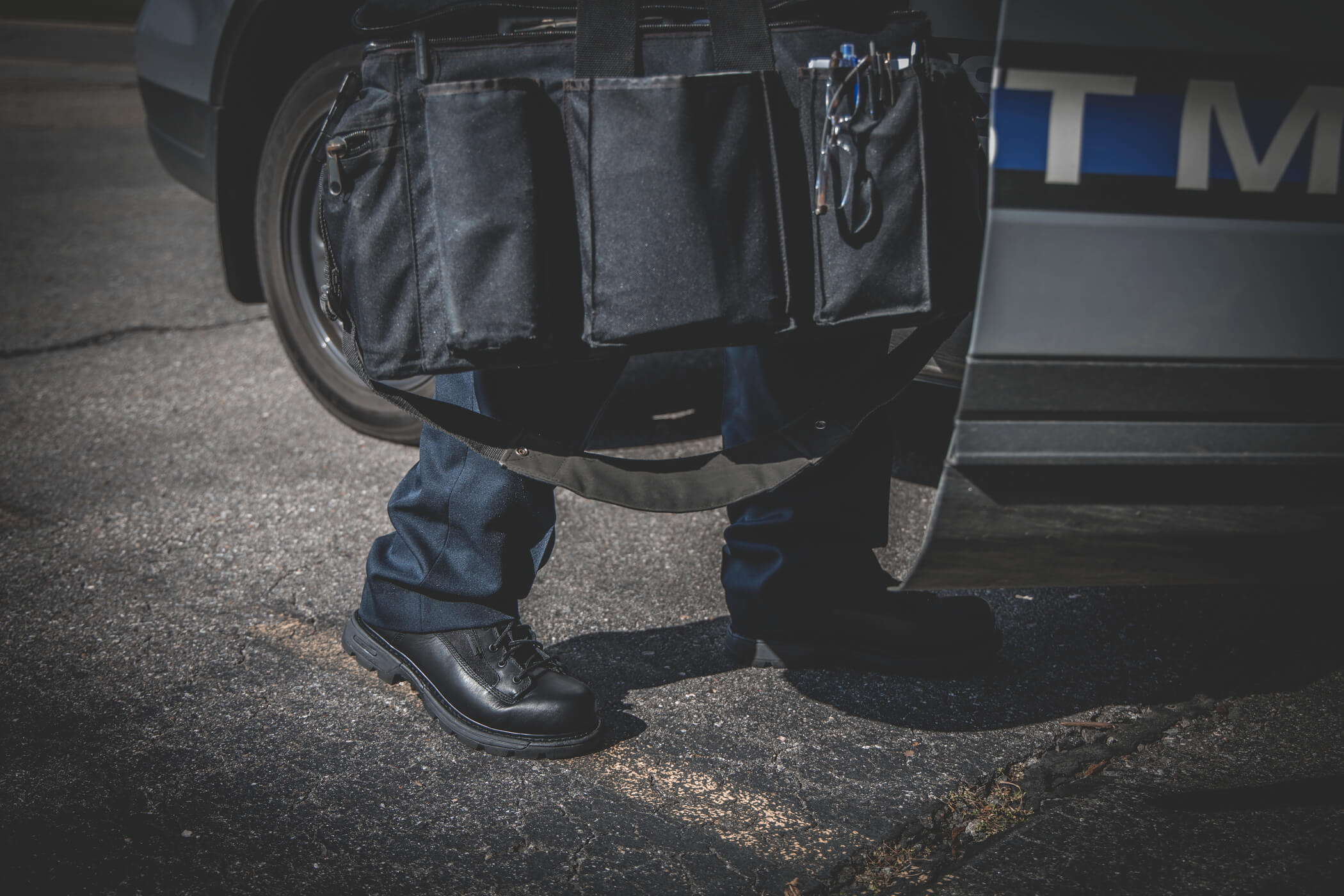Tactical boots and shoes come in many shapes and sizes, from large, protective boots to lighter, more nimble shoes. Selecting the right footwear for the job is going to depend on the work you do, and on the context within that work.
POLICE
For instance, law enforcement footwear is available in three general categories. Class A uniform requirements are formal, worn for special occasions, ceremonies, and funerals. These standards, as a forward-facing symbol of professionalism, help departments establish command presence and authority in the communities they serve. When shopping for police shoes to go with Class A dress, look for professional oxford shoes with plenty of cushioning underfoot made from lightweight, shock-absorbing ethylene-vinyl acetate (EVA). This will keep you comfortable for long periods on your feet. A non-marking outsole, with siping for slip-resistance on smooth surfaces is ideal. And polishable leather or a high-gloss poromeric material will look sharper and more impressive at ceremony (Note: poromeric shoes do not need polishing).
Class B uniform requirements are used for street duty and patrol dress, the most common daily uniform standard for most officers. Still projecting an air of professionalism and authority, these uniform standards are more casual and need to be able to jump into action at a moment’s notice. Footwear that aligns with Class B standards needs to be light and cushioned for officers on their feet all day, but protective against unexpected hazards. Waterproof tactical boots and shoes can contend with bad weather, and slip-resistant footwear with lugs will keep an officer on his feet on a variety of urban surfaces.
Class C wear is reserved for tactical situations, and some departments restrict Class C dress to specialized officers like SWAT teams, but there is a great deal of overlap between Classes B and C. Athleticism and protection are paramount here, so many officers opt for a higher-cut boot with improved ankle support, and the best police boots designed for Class C wear must be able to keep up with and protect the officer wearing–fast, lightweight, and breathable.
EMS/EMT/PARAMEDIC
Emergency medical technicians and paramedics have unique requirements for footwear. When looking for this type of footwear, different forms of protection are emphasized. Slip-resistance on surfaces like pavement is vital for moving fast under pressure. Look for tactical shoes or boots that maximize surface contact, with siping for water runoff and low lugs for gravel. Ideally, lugs wrap around the base of the sole, helping to prevent ankle turns and improving stability when moving fast.
First responders serving as EMTs and paramedics must also protect themselves from bodily fluids, and BBP (Blood-Borne Pathogen) waterproofing ensures that footwear doesn’t become a vector for contamination.
Cushioning is as important for EMS workers as it is for police officers on duty, but given the daily abuses their footwear is subjected to, EMTs might want to opt for footbeds made with polyurethane (PU). Not as lightweight as EVA, PU is more durable over the long-term, and won't compress over time.

CONCLUSION
Different types of first-responder work–and different postings–require footwear optimized to that work, and Thorogood offers a range of job-fitted uniform and tactical footwear for those who serve their communities in these capacities. This type of footwear is also favored by many civilians looking for protective footwear like motorcycle boots. The features that make them ideal for first-responders–nimble, flexible, and protective–lends them to this role as well.

